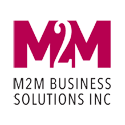To improve is to change, to be perfect is to have changed often- Winston Churchill.
WFH (Work from Home) practice has been around for a long time now. But it was only during the COVID-19 pandemic that most businesses experienced it first-hand.
While the shift to remote working was sudden and mostly forced, and the employees too struggled initially, it clearly proved that many businesses could effectively accomplish tasks without an office.
Although the world is yet to recover from the pandemic fully, we are already on the brink of another workplace disruption- ‘Hybridity’.
The Hybrid Reality
Employees like the flexibility that WFH offers. But at the same time, they also crave the in-person interactions of an office environment. A hybrid work model offers the best of both worlds by equally splitting the time spent working remotely and working in the office.
According to Microsoft’s 2021 Work Trend Index, 70% of the workers want the WFH flexibility to continue, while 65% of them crave more in-person time with their teams.
The solution?
“66% of the businesses are planning to redesign physical spaces to accommodate hybrid working.”
The hybrid work models promise the advantages of remote working, including flexibility, cost optimization, improved employee satisfaction, and the strength of in-person collaboration, smoother coordination, greater creativity, and stronger cultural socialization associated with co-located work.
But just like any other workplace disruption, hybrid working comes with its share of challenges.
Common Hybrid Working Challenges
Here is a list of a few common challenges that I’ve seen businesses struggle with while implementing hybrid work models, along with solutions that can help-
1. Unconcious Bias
According to research by MIT, remote workers often get lower performance evaluations, fewer promotions, and smaller raises compared to workers who are in the office. In other words, the age-old adage of showing face at work still holds true for many businesses.
Also, office workers who work beyond regular office hours are considered to be more committed. Remote employees also have to stretch their working hours, often more regularly than office workers. But their commitment often goes unnoticed.
Solution
Bridging the skills gap and retaining top performers is one of the biggest challenges for leaders. With their efforts not being noticed and appreciated, it is quite possible for the employees to look for another opportunity.
Leaders should provide managers with the tools that help them equally monitor the performance of office and remote employees. Nothing erodes hybrid work structures like inequality does. Best cure is Value based metrics. This allows one to measure individual performance and removes a subjective opinion.
2. Transparent Communication
A report by Recruiter suggests that poor communication is the largest factor affecting employee morale. And the problem only gets worse when half of the employees are working from the office, and the others are working remotely.
Lack of transparent communication, or any communication for that matter, also results in the feeling of isolation among remote workers.
Solution
Organizations should implement procedures and processes to ensure that all the informal communications done in-person with office workers are also shared with WFH employees when needed. It is better if formal communication is shared in writing so that all the employees receive important information.
Communication becomes more transparent when such channels are established. It also reinforces the feeling of connectivity which is often lacking in WFH models. Another successful initiative is a weekly meeting.
3. Culture Dilution
In its K-10 form, Alphabet Inc., the parent company of Google, has mentioned that dilution of work culture is one of the biggest challenges of a hybrid model. As the workforce becomes dispersed, its impact on the organization’s culture could be severe.
The target culture becomes more difficult to reinforce in a hybrid model with a significant number of employees working from home. This is a natural outcome as employees fail to connect with the company’s mission when working remotely.
Solution
The “office life” is generally the focus of corporate culture. But this focus shifts when people start working from home. Organizations should review their target culture and eliminate those aspects that are no longer suitable for a hybrid model.
Create a dedicated team to define the target culture and build a road map with steps to achieve it. Consider different use-cases for office and remote workers when creating this roadmap. Have pre-determined meetings. In these, allow people to show gratitude. Touch on principles and values of the company and reinforce.
4. Employee Well-being
According to a study published in the Journal of Occupational and Environmental Medicine, people working from home during the pandemic have reported an increased number of mental and physical problems. From the anxiety related to the pandemic to struggling with the new work routine, people’s psychological and physical well-being has taken a beating since the outbreak.
As mental and physical well-being is critical for decision-making and working effectively, this is another cause of concern that could haunt a hybrid model.
Solution
Leaders and businesses should work on measures to build the 3Qs of agility quotient. Read my article on LinkedIn to know more about this. As AQ or the Agility Quotient lays a major emphasis on improving mental, emotional, and spiritual intelligence, it could help organizations build a more positive hybrid work environment.
Not just the top brass and the leaders but the managers should also look for ways to equally engage with office and remote team members as and when possible to discuss matters related to mental and physical well-being. Professional development and skills training for managers can help them better identify individuals struggling with their psychological health.
The Future of Working is Hybrid
The benefits of hybrid working are too many to avoid. Rather than being a fad, I believe the hybrid work trend would be a global affair, with many of the biggest organizations adopting it as soon as the next year (if they’ve not already done it).
But while hybrid working has proven benefits, the implementation process can be challenging. If not done correctly, it could easily impact the effectiveness of the model and minimize the advantages. Organizations must consider leveraging on the expertise and knowledge of a business advisor to assist them through this transformation.
Sign-up for a no-objection information session with me to know more about how our training programs can help you with the hybrid transition.
Together, let’s ensure that your adoption of a hybrid work model is smooth and effective.


